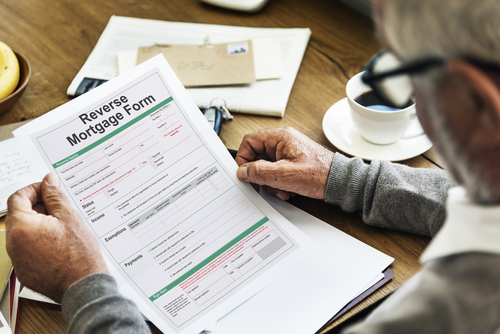 “There should be no shame” in relying on home equity to get you through retirement, said prominent financial commentator, Pattie Lovett-Reid, on BNN Friday.
“There should be no shame” in relying on home equity to get you through retirement, said prominent financial commentator, Pattie Lovett-Reid, on BNN Friday.
It marked a departure from her prior “bias,” she admitted. Up till now, she viewed reverse mortgages as a “last product of resource” (meaning a financing solution of last resort).
Many financial “experts” see reverse mortgages the same way she once did, as high-cost products that eat into your estate and leave your poor kids having to work harder for themselves. Perish the thought that seniors leave their kids less in order to have a more comfortable retirement, but that’s another discussion.
As the media warms up to reverse mortgages, it will fuel their growth. And commentators will keep warming up to them for two key reasons:
#1 – More seniors will grow desperate for cash flow
Retirement-aged Canadians already account for the fastest-growing segment of mortgage debt and insolvencies. Should that surprise anyone? Macro trends are making it happen, including the incessantly escalating “real” cost of living, the demise of defined-benefit pensions, rising health-care costs, lower savings rates, diving investment yields, a broadening “live-in-the-moment” (and spend-in-the-moment) mindset, and so on.
But seniors have one big card to play, home equity release. And, for many, it’ll be their most realistic (read, only) option as time goes on.
It’s sad, really. People should ideally save enough to avoid re-borrowing their own money at 5% interest, and avoid relying on equity that may or may not be sufficient in retirement. But reverse mortgages provide at least some kind of safety net. Financial commentators can choose to acknowledge that or they can choose to preach overgeneralized and unpalatable alternatives like “sell your home,” which 9 in 10 senior homeowners don’t want to do.
#2 – Reverse mortgage rates are near all-time lows
 This partly mitigates the #1 criticism of reverse mortgages, that their high-interest costs consume too much equity, too quickly.
This partly mitigates the #1 criticism of reverse mortgages, that their high-interest costs consume too much equity, too quickly.
This isn’t always the case, however, so long as home values keep beating inflation. A HomeEquity Bank simulation shows that someone taking a reverse mortgage worth 40% of their home value has positive equity after 10 and 20 years, so long as prices increase 3% a year on average. (If prices just track inflation, this sample reverse mortgage would leave you with 13% less equity after 10 years.)
Just this week, reverse mortgage rates fell to a new multi-year low with Equitable Bank launching a 4.89% 1-year fixed rate. The good thing about Equitable (versus its arch-rival) is that renewing customers get the same rates as new customers. “Borrowers can choose any rate offering on our website at reset,” the company told us. After one year, they can pick any term they want as well.
That means someone could take a string of 1-year fixed rates and potentially save 60 basis points over a 5-year fixed, based on today’s rates. Such savings adds up over time and reflects the historical advantage of 1-year rates over 5-year terms. (Of course, past performance is not indicative of future results and risk tolerance should be considered.)
Timing is everything, however. If home values dip or soar in the ensuing years after your reverse mortgage, one’s equity results can differ dramatically. The good news is that reverse mortgage lenders can never bill you for more than your home is worth, so long as you keep paying your property taxes and home insurance and don’t let the property fall into disrepair.
How This Plays Out
 As additional prominent media personalities climb aboard the reverse mortgage train, bet on that train picking up speed. The biggest risk to homeowners is not that a reverse mortgage blows through their equity after origination. It’s that their equity before origination isn’t sufficient when they go to tap it.
As additional prominent media personalities climb aboard the reverse mortgage train, bet on that train picking up speed. The biggest risk to homeowners is not that a reverse mortgage blows through their equity after origination. It’s that their equity before origination isn’t sufficient when they go to tap it.
There’s a retirement crisis brewing as we’ve written ad nauseam and it’ll impact seniors in one of two ways:
- badly, or
- if home equity doesn’t keep growing consistently, really badly.
Millions of under-invested Canadians will need a fail-safe in time. We don’t yet appreciate how important reverse mortgages will become.

 log in
log in
6 Comments
Reverse mortgages shouldn’t be the first option for a lot of seniors. I hope to never have to take one out myself.
But I think far too many out there haven’t planned properly for retirement (or had big, unexpected expenses that dwindled their savings). For them, a reverse mortgage is a lifeline to let them live out their remaining years in comfort.
Sadly I think you’re right in that we’re facing a retirement crisis in the not-so-distant future.
With you 100% Corbin.
Apart from the high interest rates charged on reverse mortgages, the potentially more significant issue is that a reverse mortgage diminishes a senior’s capacity to pay for assisted living once they’re unable to care for themselves in their home. Having spent a fair amount of time in retirement homes, my sense is that many seniors rely on their home equity to pay for care. It’s one thing to want to die in your home, it’s another thing altogether to die 5 years earlier in your home than you might’ve if you’d been able to afford to pay for assisted living with the home equity that disappeared into the already overstuffed pockets of Birch Hill.
Most people get reverse mortgages because they have no other way to fund their living expenses. Their assisted living costs after they leave their home isn’t top of mind when they’re trying to survive today. I might also add that reverse mortgage clients are left with almost 50% equity on average when they discharge.
Just wondering how a HELOC would compare for those who need to supplement their retirements to a lesser degree?
Hi Jon,
HELOCs are great if you can qualify, don’t mind making the minimum (interest-only) payment and the loan-to-value you need is low.
A HELOC will save you a ton of interest (up to 1.14 percentage points on rate, as of today), especially if you don’t draw a big lump sump up front.